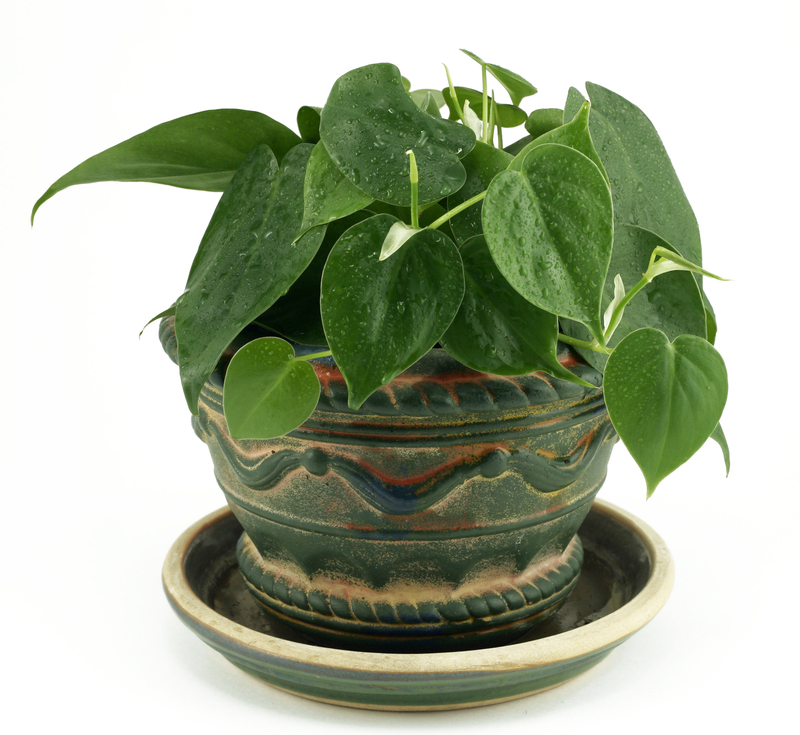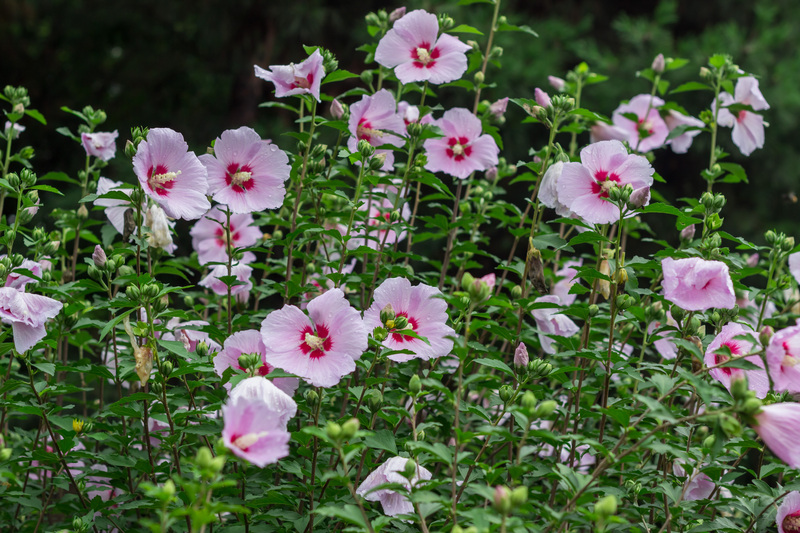Maximize Beauty with Vertical Gardening
Posted on 18/09/2025
Maximize Beauty with Vertical Gardening: Transform Your Space
In today's fast-paced urban environments, maximizing the beauty of compact spaces is not just an option--it is a necessity. Vertical gardening has emerged as a revolutionary approach to enhancing the aesthetics, productivity, and environmental value of indoor and outdoor areas. Whether you are working with a tiny balcony or aiming to create a lush green statement wall, vertical gardens offer creative solutions that are as functional as they are beautiful.

What is Vertical Gardening?
Vertical gardening, also known as living wall gardening or green wall gardening, is the art and practice of growing plants upward on structures rather than outward on the ground. By integrating purpose-built frames, shelves, trellises, pockets, or modular panels, vertical gardens allow you to maximize limited space while providing a stunning visual centerpiece. These gardens can be installed indoors, outdoors, against walls, or as standalone features.
Why Choose Vertical Gardening?
- Space Optimization: Makes the most of small areas--perfect for city dwellers.
- Enhanced Aesthetics: Creates captivating, living works of art with diverse plant textures and colors.
- Improved Air Quality: Plants act as natural air filters, absorbing toxins and releasing oxygen.
- Temperature Regulation: Living walls insulate buildings, lowering energy costs.
- Health and Well-being: Elevates mood, reduces stress, and boosts creativity.
Different Types of Vertical Gardens
There are myriad ways to maximize beauty with vertical gardening. Whether you prefer DIY designs or professionally-installed systems, the following varieties will spark your imagination:
- Trellis and Climbing Plants: Classic and cost-effective, these support vines like clematis, jasmine, or morning glories.
- Living Walls or Green Walls: Modular panels or hydroponic pockets for dense foliage installations, ideal for both homes and office buildings.
- Pallet Gardens: Repurposed wooden pallets fitted with soil and plants, producing rustic charm perfect for herb or flower gardens.
- Hanging Gardens: Rows of pots, baskets, or containers suspended vertically via ropes or racks.
- Gutter Gardens: Old rain gutters mounted on fences or walls and filled with trailing plants, strawberries, or lettuce.
- Tower Gardens: Stackable planters forming vertical structures, often used for edible plants or succulents.
Choosing the Best Plants for Your Vertical Garden
Not all plants are created equal when it comes to vertical garden beauty. Selection is vital for long-lasting success and visual appeal. Considerations include sunlight, temperature, moisture, and space availability.
Best Plants for Outdoor Vertical Gardens
- Ferns: Hardy, shade-loving, and excellent for lush texture.
- Vining Flowers: Such as sweet peas, nasturtiums, and black-eyed Susan vine, which add color and fragrance.
- Climbing Vegetables: Beans, peas, cucumbers, and tomatoes maximize produce in small footprints.
- Succulents: Low maintenance, drought-tolerant, and ideal for sunny spaces.
- Herbs: Including basil, mint, and oregano for culinary inspiration and aromatherapy.
Best Plants for Indoor Vertical Gardens
- Pothos and Philodendron: Adaptable to various light conditions, renowned for air purification.
- Spider Plants: Fast-growing, prolific, and perfect for hanging displays.
- Peace Lilies: Elegant, flowering, and low-light tolerant.
- English Ivy: Great for trailing over shelves and purifying indoor air.
- Ferns: Boston fern and maidenhair ferns thrive in humid, shaded spaces.
Tip: Always factor in water drainage, as plants in vertical settings can dry out more quickly.
How to Create a Stunning Vertical Garden
1. Assess Your Space
- Decide on indoor or outdoor placement.
- Evaluate available light and temperature fluctuations.
- Measure dimensions to determine the appropriate vertical gardening system.
2. Select a Suitable Structure
- Trellises and Frames: Ideal for climbing plants and vines.
- Wall-Mounted Planters: Use for tight, vertical spaces and modular flexibility.
- Pocket Planters or Felt Trays: Suitable for herbs and leafy greens.
- Recycled Containers: Bottles, cans, or pallets bring quirky, upcycled style.
3. Prepare the Wall or Support
- Use waterproofing sheeting to protect walls from moisture if necessary.
- Install sturdy fixtures suited to your garden's weight and dimensions.
4. Choose and Arrange Plants Strategically
- Group similar water and light needs together.
- Layer trailing plants along vertical edges.
- Mix textures, heights, and colors for visual interest.
- Reserve easily accessible spaces for herbs and regularly harvested crops.
5. Fertilize and Irrigate Properly
- Drip irrigation systems are highly recommended for larger vertical gardens.
- Smaller gardens may need manual misting or watering cans.
- Use slow-release fertilizers suitable for the plant varieties selected.
Design Tips to Maximize Beauty with Vertical Gardens
Vertical gardening is not solely about packing in as many plants as possible; it's about creating harmony and enhancing beauty. These design strategies will help you create awe-inspiring living walls:
- Color Coordination: Select complementary or contrasting flower and foliage hues for vibrancy.
- Texture Variation: Combine leafy ferns, spiky succulents, and cascading vines for visual drama.
- Height Layering: Use larger plants as anchors and trailing varieties for cascading movement.
- Seasonal Rotation: Swap out annuals and perennials for year-round interest.
- Themed Gardens: Create specialized gardens such as herb walls, butterfly-attracting flowers, or edible greens for culinary gardens.
- Lighting: Indoor gardens benefit from grow lights or well-placed spotlights that emphasize beauty after dark.
Maintaining Your Vertical Garden
Once your vertical garden is thriving, regular maintenance will ensure your living wall continues to maximize beauty and vitality. Essential care steps include:
- Pruning: Trim dead leaves, overgrowth, and spent flowers for neatness and new growth.
- Feeding: Supply additional nutrients with appropriate fertilizers as needed.
- Watering: Monitor soil moisture, as plants in vertical gardens can dry out faster.
- Pest Management: Watch for insects and treat affected plants promptly to avoid infestation.
- Structural Check: Ensure that supports, fixtures, and containers remain secure over time.
Environmental and Personal Benefits of Vertical Gardening
Environmental Impact
- Air Purification: Plants trap dust, absorb carbon dioxide, and produce oxygen.
- Urban Cooling: Living walls reduce urban heat by providing natural shade and insulation.
- Wildlife Habitat: Invite beneficial pollinators such as bees and butterflies into your space.
- Rainwater Management: Soil and plants retain water run-off, reducing flooding.
Personal Well-being
- Stress Reduction: Greenery relaxes the mind and improves mood.
- Productivity Boost: Studies show that living walls boost workplace efficiency and creativity.
- Food Security: Grow your own fresh vegetables, fruits, and herbs even without garden beds.
Common Questions About Maximizing Beauty with Vertical Gardening
Can I create a vertical garden indoors?
Yes! With proper light and a waterproof mounting system, indoor vertical gardens can thrive in homes, offices, and apartments. Choose low-maintenance foliage, like pothos, ferns, and philodendrons, to maximize beauty with minimal upkeep.
What maintenance does a vertical garden need?
Regular watering, trimming, and checking for pests or disease are vital. For larger systems, consider installing drip irrigation. Fertilize every few months to ensure lush growth and vibrant color.
Are vertical gardens expensive?
Costs vary based on size, design, and plant choice. DIY pallet gardens or upcycled containers are very affordable. Professional living walls with automated irrigation and lighting can be a larger investment, but they dramatically maximize aesthetic beauty and property value.
What is the best way to water a vertical garden?
Drip irrigation or trickle systems are most efficient for large vertical gardens. For smaller DIY setups, regular hand watering or misting is sufficient. Ensure excellent drainage to prevent root rot.

Practical Ideas to Get Started with Vertical Gardening
- Create an Herb Wall: Use a wall-mounted pocket panel near your kitchen to grow basil, chives, parsley, and more.
- Succulent Art Frames: Build living picture frames with shallow boxes filled with striking succulents.
- Balcony Trellis: Install trellises or wire grids to grow morning glories, peas, or small gourds upward.
- Recycle and Reuse: Turn plastic bottles, cans, or old shoe organizers into charming vertical planters.
- Indoor Green Wall: In office spaces, living wall panels bring vitality and air purification.
Conclusion: Elevate Your Space and Maximize Beauty with Vertical Gardening
Vertical gardening is more than a trend; it is a sustainable, transformative approach to greening modern spaces. With the right plants, creative design, and strategic care, you can maximize beauty, optimize your environment, and enhance your well-being--no matter the size of your space.
Start small or think big--the possibilities are endless. From luscious living walls to charming pocket gardens, vertical gardening empowers you to redefine what beauty means in gardening. Join the green revolution and give your home or office the natural, bold aesthetic it deserves!
Ready to maximize the beauty of your home, balcony, or workspace? Dive into vertical gardening today and watch your environment bloom--upwards!

